Exploring the Enchanting Skellig Islands: Monastic Ruins and Breathtaking Wildlife
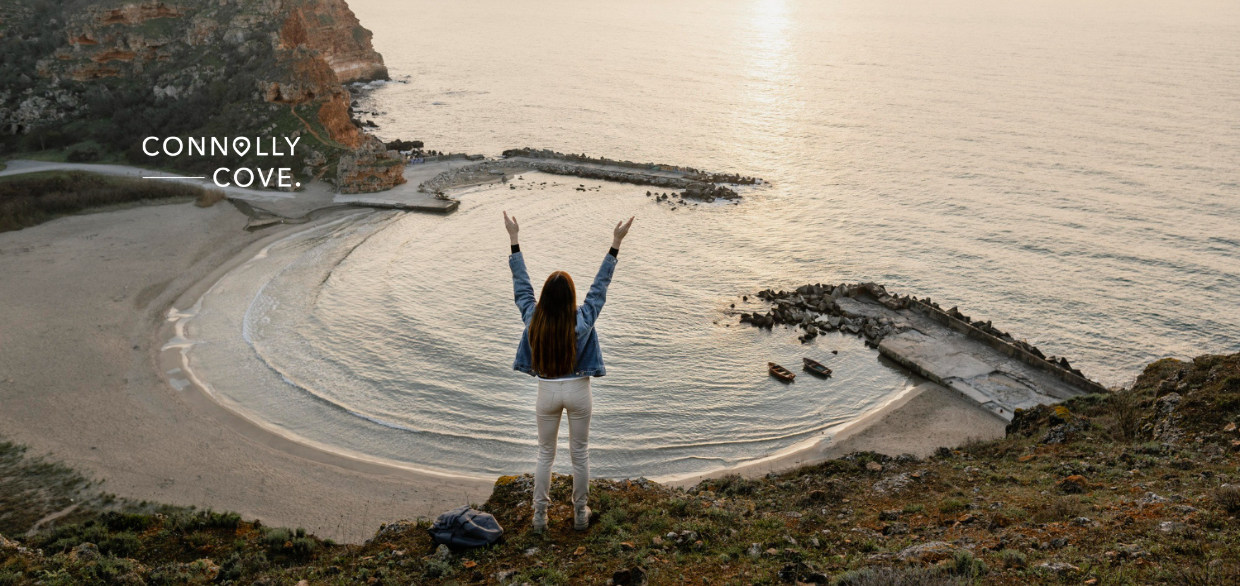
Updated On: February 01, 2024 by Maha Yassin
Eight miles off the rugged Irish coast, shrouded in mist and mystery, rise the Skellig Islands. More than just dramatic landscapes, these emerald outposts boast a rich tapestry woven from the dedication of early Christian monks, the cacophony of countless nesting birds, and the raw power of the Atlantic Ocean.
Intrigued? Come delve into the story of these UNESCO World Heritage Sites, where ancient beehive huts cling to windswept cliffs, gannets paint the sky with white wings, and the whispers of the past mingle with the cries of playful seals. It’s a world apart, waiting to be unveiled.
The Rich History of Skellig Islands
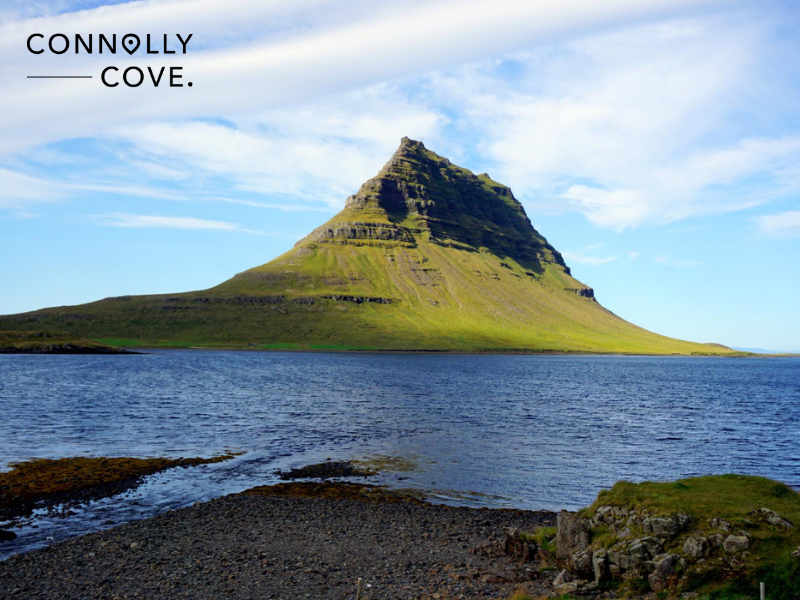
Nestled off the southwestern coast of Ireland, the Skellig Islands stand as rugged sentinels against the relentless waves of the Atlantic Ocean. Steeped in history, mystery, and natural beauty, these remote islands have captured visitors’ imaginations for centuries. Join us on an exciting journey through time as we unravel the rich tapestry of the Skellig Islands’ history.
Early History
The story of the Skellig Islands begins over a millennium ago, with the arrival of early Christian monks seeking solitude and spiritual connection. The larger of the islands, Skellig Michael, became a monastic retreat in the 6th century, its stark cliffs providing a natural fortress against the outside world. These daring monks erected beehive-shaped stone huts, creating a monastic settlement that clung precariously to the island’s sheer cliffs.
Monastic Life
For centuries, Skellig Michael served as a place of contemplation and devotion. Living in austere conditions, the monks carved a series of stone steps into the cliffs, a testament to their determination and resilience. The monastery on the island is a remarkable feat of medieval engineering, its enduring structures reflecting the monks’ dedication to their spiritual pursuits.
Viking Raids and Abandonment
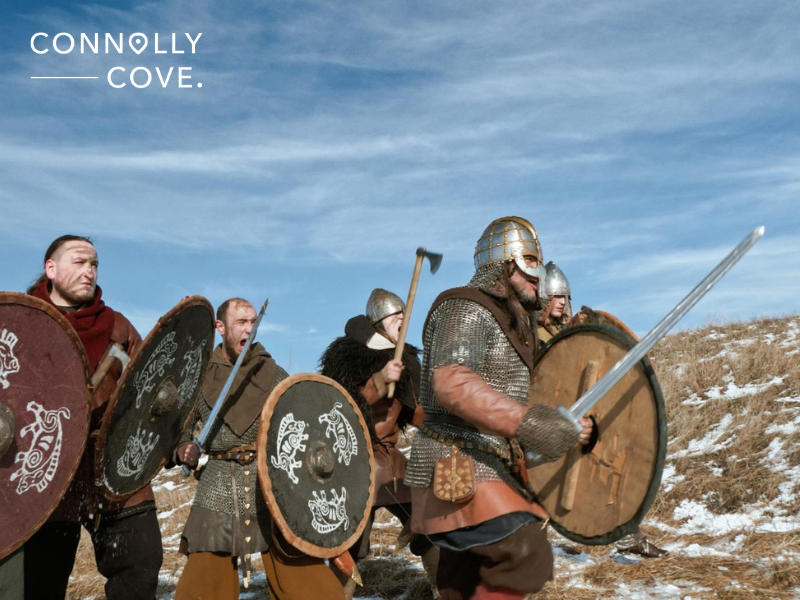
The tranquillity of Skellig Michael was shattered by Viking raids in the 9th century, forcing the monks to abandon their sanctuary. The monastic community relocated to the mainland, leaving behind the weathered remnants of their ascetic existence. The islands, now devoid of human habitation, reverted to the wild beauty that had captivated the monks in the first place.
Maritime Significance
As the centuries passed, the Skellig Islands gained importance for sailors navigating the treacherous waters of the Atlantic. The jagged cliffs served as beacons for maritime navigation, aiding sailors in avoiding the perils of the open sea. The islands became synonymous with the challenges and triumphs of seafaring, their silhouette etched into the maritime history of Ireland.
As we reflect on the history of the Skellig Islands, it’s evident that these remote outcrops have woven a narrative that transcends time. From the solitude-seeking monks of the early Christian era to the modern-day pilgrims drawn by the islands’ cinematic allure, the Skellig Islands continue to cast their spell on all who venture into their rugged embrace. Whether viewed through the lens of spirituality, maritime navigation, or cinematic splendour, the Skellig Islands remain a testament to the ever-living connection between humanity and nature’s wild, untamed forces.
The Monastic Settlement: A Testament to Ingenuity and Faith
Skellig Michael’s monastic settlement isn’t just a collection of weathered stones; it’s a window into the lives and beliefs of the monks who called it home. Each structure, each carefully carved detail, tells a story of their remarkable adaptation and unwavering faith. Let’s delve deeper into this unique architectural marvel:
Beehive Bliss
The most iconic structures are undoubtedly the beehive huts. Built using dry-stone corbelling, a technique where each layer of stones leans inwards slightly, they provided surprisingly sturdy and weatherproof dwellings. Despite their compact size, you’ll find sleeping areas, storage spaces, and even niches for lamps and religious objects. Imagine the monks huddled here during storms, the flickering light casting warm shadows on the rough-hewn walls.
Praying on the Precipice
Another highlight is the Church of St. Fionán, perched precariously on the island’s western side. This small, rectangular building with its corbelled roof served as the community’s spiritual centre. Imagine the monks gathering here for prayer, their voices carried away by the Atlantic winds.
Beyond the Basics
Beyond the essential living and praying spaces, the settlement reveals the monks’ resourcefulness and dedication to a self-sufficient life. Stonewater cisterns collected precious rainwater, while carefully constructed gardens provided vegetables and herbs. Hermitages offered spaces for solitary contemplation, their isolation adding to the island’s tranquillity.
A Legacy in Stone
Exploring these structures evokes a profound respect for the monks’ resilience and ingenuity. Building on such a challenging terrain, defying the elements with their clever construction techniques, and carving a life dedicated to faith – their story continues to inspire awe centuries later.
Unveiling the Vibrant Wildlife of Skellig Islands
Skellig Michael’s story isn’t just etched in stone; it’s also painted in the vibrant plumage of its feathered residents and sung in the melodic cries of its marine visitors. Stepping off the boat, you’re not just entering a historical site but venturing into a wildlife sanctuary teeming with life.
Avian Abundance
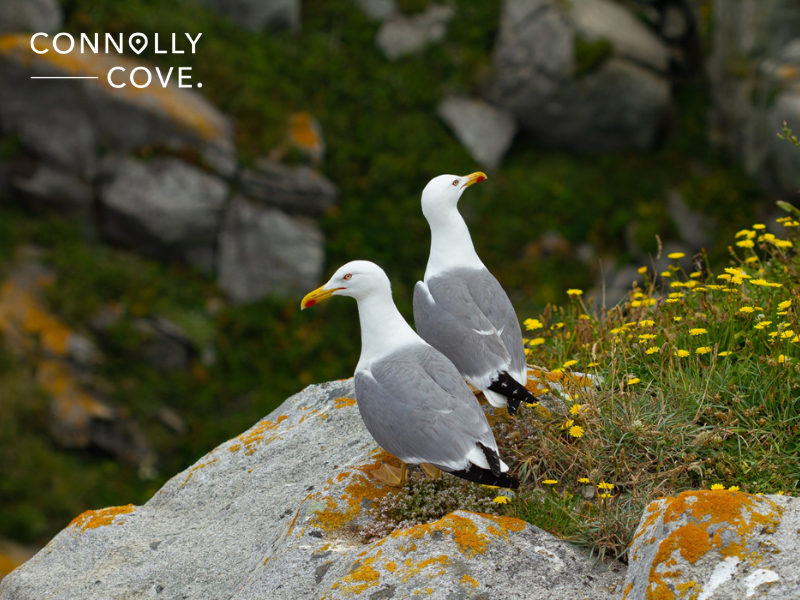
Skellig Islands are renowned for their avian inhabitants, particularly during the nesting season. The cliffs of Skellig Michael host one of the largest colonies of northern gannets in Ireland, their white plumage contrasting sharply with the dark rock faces. Puffins, razorbills, guillemots, and kittiwakes also find refuge on the cliffs, creating a cacophony of calls that fills the air during the breeding season.
Peregrine Falcons
The cliffs and rocky crags of the Skelligs provide an ideal habitat for one of Ireland’s most iconic raptors – the peregrine falcon. With breathtaking speed and precision, these magnificent birds of prey patrol the skies, contributing to the diverse avian tapestry of the islands. Their presence adds a touch of wild majesty to the already dramatic landscape.
Seals and Marine Life
The surrounding waters teem with marine life as the Atlantic waves crash against the Skelligs’ rocky shores. Grey seals can often be spotted basking on the rocks, their sleek bodies blending seamlessly with the rugged surroundings. Beneath the surface, the waters are home to various fish species, attracting seals and seabirds alike. Lucky visitors might even catch a glimpse of dolphins or porpoises frolicking in the waters surrounding the islands.
Floral Splendor
Despite the harsh and exposed conditions, the Skellig Islands boast a surprising array of plant life. Grasses, mosses, and lichens cling tenaciously to the rocky surfaces, adding a touch of green to the otherwise stark landscape. In sheltered pockets, wildflowers bloom in season, creating vibrant bursts of colour against the rugged backdrop.
Conservation Efforts
Recognising the ecological significance of the Skellig Islands, efforts have been made to preserve and protect the unique wildlife that inhabits these remote outcrops. Conservation initiatives aim to maintain the ecosystem’s delicate balance, ensuring the continued well-being of the avian residents, marine life, and the plant species that contribute to the islands’ biodiversity.
Visitor Guidelines
As the Skellig Islands have gained popularity among tourists, strict guidelines are in place to minimise the impact on the fragile ecosystem. Visitors are encouraged to respect designated paths, refrain from disturbing nesting birds, and follow responsible tourism practices to ensure that the islands’ wildlife can thrive undisturbed.
Stepping onto Skellig, Michael is stepping into a world where history, nature, and human ingenuity intertwine. From the whispers of the monks to the cries of the seabirds, this captivating island reveals its secrets to those who listen closely. It’s a reminder of the interconnectedness of life and the importance of preserving this unique and irreplaceable treasure.
Skellig Islands in the Modern Day: Balancing Preservation and Allure
The Skellig Islands, cloaked in history and teeming with wildlife, haven’t escaped the touch of the modern world. Balancing the desire to share their wonder with the need to preserve their fragile ecosystem and heritage presents a unique challenge. Let’s explore the realities of the Skelligs today:
A UNESCO World Heritage Site
Standing proudly among global treasures, both Skellig Michael and Little Skellig were awarded UNESCO World Heritage status in 1986. This prestigious recognition acknowledges their outstanding universal value, encompassing the islands’ cultural significance, exceptional natural beauty, and unique biodiversity.
Limited Access and Responsible Tourism
A trip to Skellig Michael isn’t your typical beach vacation. Landing on the island is an adventure in itself. The cliffs and unpredictable Atlantic waters necessitate special considerations. Visitor numbers are strictly limited to protect the environment and archaeological sites, ensuring a sustainable future for this irreplaceable treasure. Boat tours operate only from May to September, adhering to strict regulations that dictate landing times and visitor behaviour.
Preserving the Past, Piece by Piece
Imagine the relentless winds and salty spray battering the ancient stone structures for centuries. Conservation teams face a constant battle against the elements and the relentless march of time. Maintaining the beehive huts, oratories, and other structures requires skilled craftsmanship and specialised techniques. Ongoing research delves into the mysteries of the monastic community, their way of life, and the secrets hidden within the stone walls. These insights inform meticulous preservation efforts, ensuring the legacy of the monks continues to whisper through the ages.
Star Wars: A Forceful Connection
In 2015, the Skelligs rocketed to global fame as filming locations for Star Wars: The Force Awakens. While the iconic scene of Luke Skywalker’s hermitage perched atop a windswept cliff undoubtedly boosted tourism and the local economy, concerns arose about potential damage from filming and increased tourist pressure. Thankfully, the production team collaborated closely with conservationists to minimise impact. The experience undeniably raised awareness of the islands’ global significance, introducing countless individuals to the magic of the Skelligs.
The Delicate Dance of Tourism
Tourism undeniably plays a vital role in the local economy of the Kerry region, providing crucial support for conservation efforts and the livelihoods of communities dependent on the islands. However, managing the influx of visitors while ensuring responsible behaviour is a constant challenge. Educational programs inform tourists about the islands’ cultural and natural significance, fostering respect and appreciation for their fragility. Guided tours led by experts ensure visitors stay on designated paths and minimise environmental and archaeological site disturbance. Clear regulations and visitor codes further contribute to responsible tourism practices.
Looking Ahead: A Sustainable Future
The future of the Skellig Islands hinges on striking a delicate balance. Sustainable tourism practices that prioritise conservation and minimise environmental impact are crucial. Continued research and conservation efforts require ongoing funding and support. Community involvement is essential, from local businesses adhering to responsible practices to residents acting as stewards of the islands. By working together, we can ensure future generations can continue to be awed by this unique and irreplaceable treasure.
Visiting the Skelligs Islands
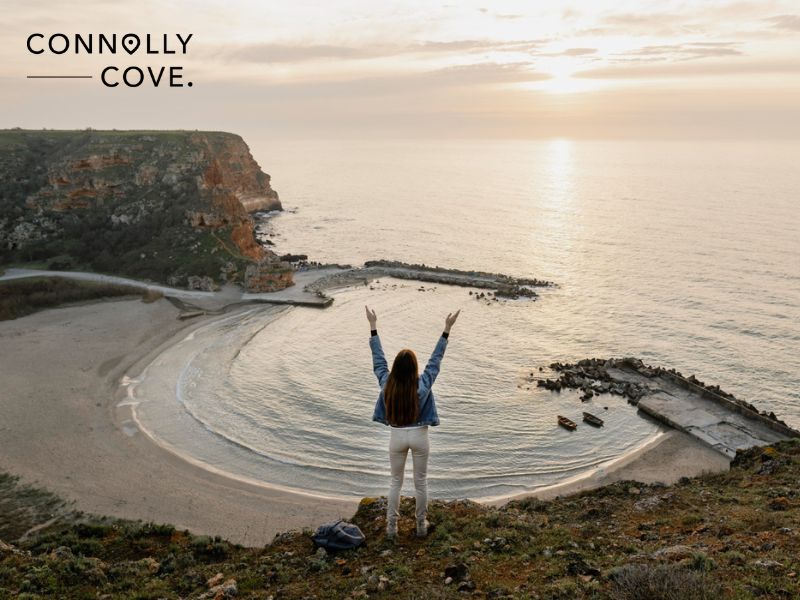
Plan ahead if you dream of experiencing the magic of the Skelligs firsthand. Booking boat tours well in advance, especially during peak season, is essential. Familiarise yourself with the regulations and visitor guidelines to ensure a responsible and enjoyable experience. Embrace the opportunity to learn about the history, appreciate the wildlife, and leave only footprints (and perhaps some well-deserved funds to support conservation efforts). The Skellig Islands offer a captivating glimpse into a world where history, nature, and human ingenuity intertwine. By understanding the challenges and supporting responsible tourism, we can all play a part in preserving this wonder for generations to come.
Here are some tips to ensure you have a great trip to the Skillage Islands:
Planning
- Book early: Boat tours fill up quickly, especially during peak season (mid-June to August). Book your tour well in advance, ideally several months if possible.
- Consider the weather: The Atlantic coast is known for unpredictable weather. Opt for tours with flexible departure times or cancellation policies in case of rough seas.
- Dress appropriately: Pack warm layers, waterproof clothing, sturdy hiking boots, sunglasses, suncream, and a hat. The wind can be strong, and rain is always a possibility.
- Pack essentials: Bring water, snacks, seasickness medication (if needed), and a camera with plenty of batteries. Remember, there are no toilets on Skellig Michael.
Accessibility
- Be prepared for a physical challenge: The climb to the monastic settlement involves 600+ steep, uneven stone steps. Consider your fitness level before booking.
- Limited mobility options: If you have mobility limitations, discuss accessibility options with tour operators beforehand. The climb might not be feasible, but boat tours offer beautiful island views.
Responsible Tourism
- Respect the environment: Stick to designated paths, avoid touching historical structures, and dispose of waste responsibly.
- Minimise noise and disruption: Be mindful of the wildlife and other visitors, especially near nesting birds.
- Support local businesses: Choose tour operators committed to sustainable practices and consider staying overnight in the local area to contribute to the local economy.
Additional Tips
- Bring cash: There are no shops on Skellig Michael so cash might be needed for boat tours or food on the mainland.
- Check tide times: Tides can affect landing times, so be prepared for potential adjustments.
- Learn some Irish: Basic phrases can go a long way in showing respect and appreciation to the locals.
- Embrace the adventure: The Skellig Islands are a unique and challenging destination. Be prepared for the unexpected, and enjoy the journey!
By following these tips, you can ensure a safe, enjoyable, and responsible visit to the Skellig Islands, leaving only footprints and taking away unforgettable memories.
The Skellig Islands whisper tales of faith, resilience, and nature’s untamed beauty. They challenge us to balance preservation with exploration, reminding us that wonder comes with responsibility. Whether soaring with gannets or marvelling at beehive huts, let their timeless allure inspire you to leave only footprints and carry their magic within.
FAQs
What can I expect on a Skellig Islands tour?
The journey involves landing on Skellig Michael, the larger island. Expect steep climbs, stunning views, historical monastic ruins, and abundant wildlife (puffins, gannets, seals). Be prepared for unpredictable weather and dress accordingly.
How long does it take to visit the Skellig Islands?
Boat tours typically take 4-5 hours, with around 2-2.5 hours spent on the island itself. This includes landing, exploring, and returning to the mainland.
Is it difficult to climb to the monastic settlement?
Yes, the climb involves over 600 steep, uneven stone steps. Consider your fitness level before booking. Limited mobility options might be available with some tour operators, inquire beforehand.
What’s the best time to visit the Skellig Islands?
May to September offers the best weather and boat tour availability. However, expect crowds, especially in peak season (mid-June to August). Consider visiting earlier or later in the season for a potentially calmer experience.
What else can I do around the Skellig Islands?
Explore the charming villages and dramatic coastline of the Iveragh Peninsula. Visit local museums and archaeological sites to delve deeper into Irish history. Enjoy hiking, kayaking, and other outdoor activities in the region.






